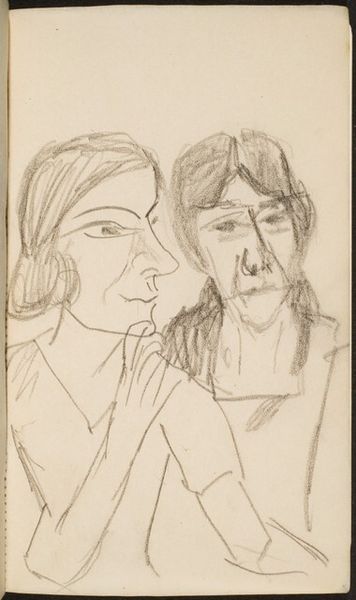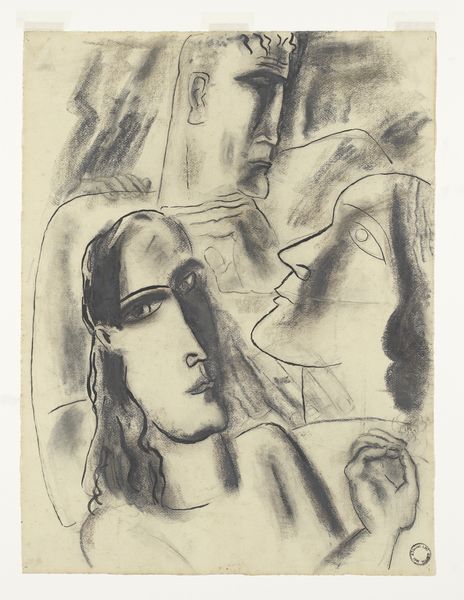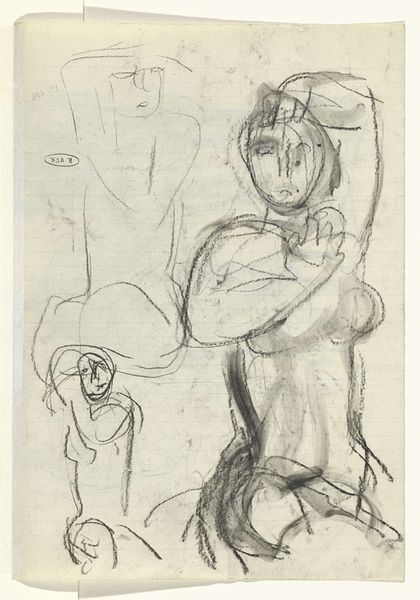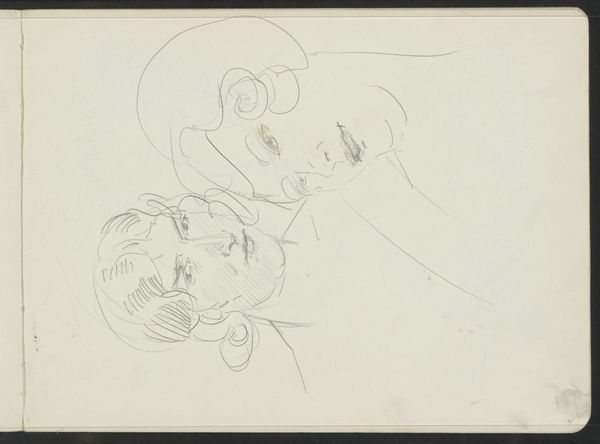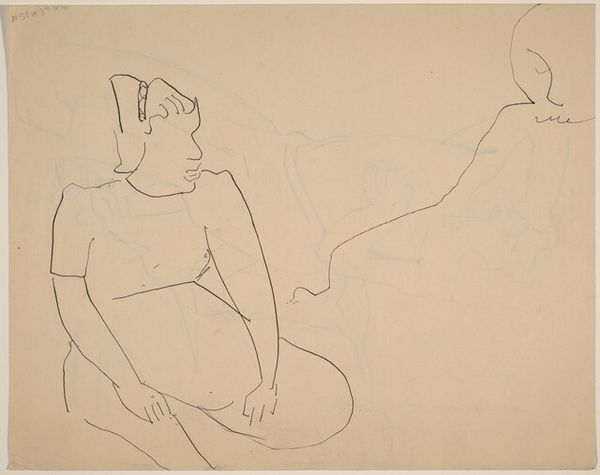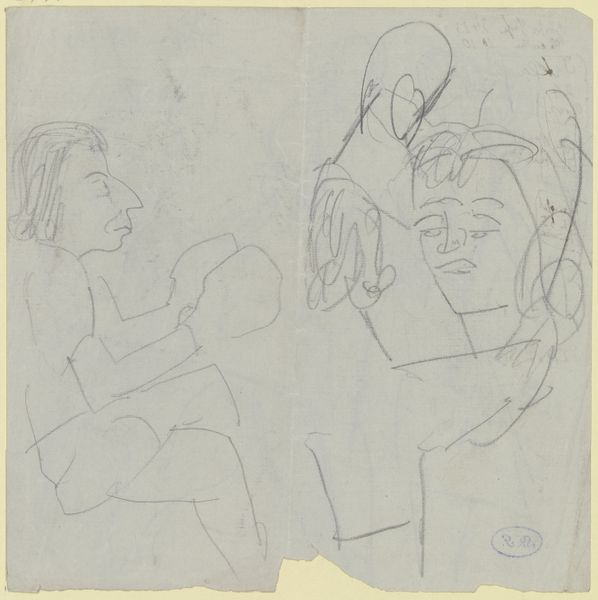
drawing, pencil, graphite
#
portrait
#
drawing
#
comic strip sketch
#
imaginative character sketch
#
quirky sketch
#
figuration
#
personal sketchbook
#
idea generation sketch
#
ink drawing experimentation
#
pen-ink sketch
#
pencil
#
graphite
#
sketchbook drawing
#
storyboard and sketchbook work
#
sketchbook art
#
modernism
Dimensions: height 163 mm, width 212 mm
Copyright: Rijks Museum: Open Domain
Editor: Here we have Leo Gestel's "Twee staande mensen," which translates to "Two Standing People." It's a drawing, made sometime between 1891 and 1941. The first thing that strikes me is its simplicity, almost like a quick sketch. What can you tell us about it? Curator: The rapid strokes belie Gestel’s engagement with modernism's shifting terrain. Note the visible process—the pencil marks, the unfinished quality. This wasn't about creating an illusion, but exposing the labor, the very act of drawing. Editor: So, the "unfinished" look is deliberate? It feels almost rebellious. Curator: Precisely! It challenges the established artistic production system. What would it have meant to meticulously render every detail, polishing the sketch into a 'finished' piece? What hierarchies would that uphold, what labour would that conceal? Editor: It’s like Gestel is pushing back against the idea of art as a commodity. Was this common during that period? Curator: Certainly. The rise of industrial capitalism led many artists to question traditional artistic roles and the elitism of the art world. Artists started to highlight the making, drawing attention to art as a form of work. They experimentend to with their craft and the way it was consumed. Gestel uses readily available graphite and inexpensive paper, materials that democratise art making. Editor: I've always thought about the final product, but rarely considered the materials or the artist’s labor like that. Curator: Thinking about the materials, the means of production and labor—that's a vital aspect of understanding this work, and art more generally. Editor: Absolutely. It completely changes how I see the drawing, not just as an image but as a statement. Curator: Indeed, the beauty resides not just in the image, but also in understanding its place within material conditions of its making.
Comments
No comments
Be the first to comment and join the conversation on the ultimate creative platform.


